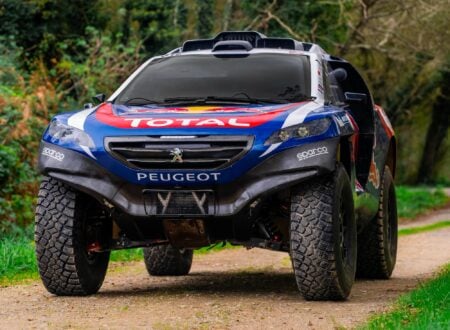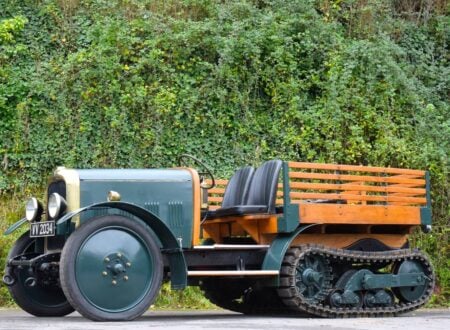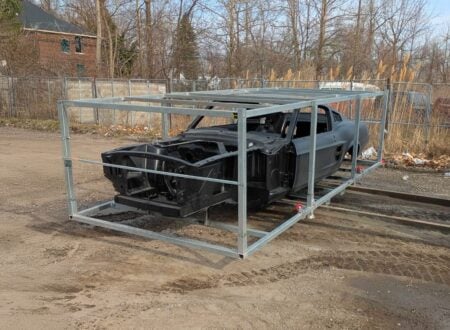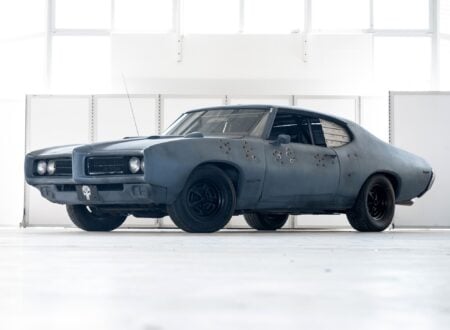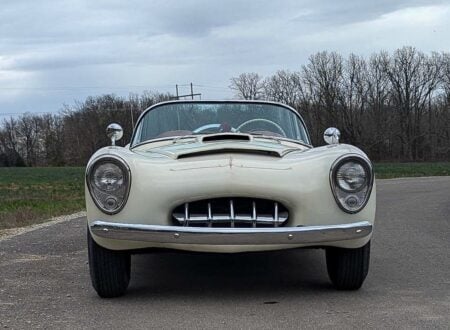This is an original 1969 Ford Mustang Boss 429, one of the most desirable muscle cars from the era – and that’s really saying something because it comes from right around the time that the Golden Age of the American muscle car was at its peak.
Given the fact that relatively few of these were built, compared to the Boss 302 anyway, they do tend to fetch solid prices when sold. But there’s something about the grumble of that 429 cubic inch V8 under the hood that makes even the most ardent fan of electric cars second guess their life choices.
Fast Facts: The Boss 429
- The 1969 Ford Mustang Boss 429 was a limited-production homologation model created so Ford could qualify its new 429 cubic-inch semi-hemi V8 for NASCAR. Built by Kar Kraft in Brighton, Michigan, each car received a heavily reworked engine bay, revised suspension, and a trunk-mounted battery to accommodate the massive “Shotgun” motor.
- Every Boss 429 came with a close-ratio Toploader 4-speed manual, 3.91 Traction-Lok rear axle, power front discs, and functional ram-air hood scoop. Ford rated the 429 V8 at 375 bhp and 450 lb-ft, though period tests and insider estimates put true output near 500 horsepower, with quarter-mile times around 14 seconds.
- The model ran only two years. The 1969 version used hydraulic lifters and color-keyed scoops, while the 1970 version adopted a mechanical-lifter cam, matte-black scoop, standard Hurst shifter, and bright Grabber colors. Production totaled about 1,359 cars—859 in 1969 and 499 in 1970 – making them extremely scarce and collectible.
- Though the Mustang wasn’t Ford’s NASCAR body of choice, the homologated 429 engine powered Torino Talladegas and Mercury Cyclones on track. Today, the Boss 429’s rarity, historic pedigree, and Kar Kraft build quality keep values high.
History Speedrun: The Boss 429 Ford Mustang
Ford’s Boss 429 began with a racing problem, not as a planned production car intended for widespread public adoption. By 1968, Chrysler’s 426 Hemi was the yardstick on NASCAR’s superspeedways, and Ford needed a fresh big-block answer built around its new 385 series architecture.
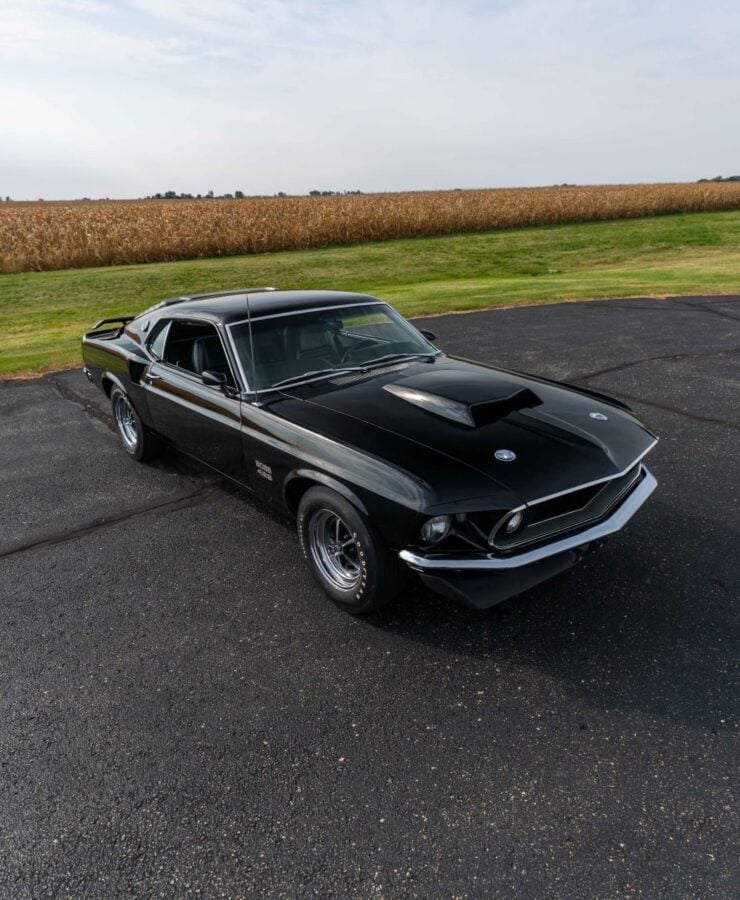

The solution was a semi-hemispherical, aluminum-headed 429 with dry-deck sealing and massive ports – an engine designed for NASCAR’s Talladega and Daytona rather than stop-light 1/4 mile runs.
NASCAR homologation rules required 500 street cars with the engine, so Dearborn chose the Mustang as the homologation mule and handed the heavy lifting to Kar Kraft in Brighton, Michigan. Partially-built 428 Cobra Jet SportsRoof Mustang bodies were shipped in, stripped, and reworked so the “Shotgun” 429 V8 would fit under the hood.
Kar Kraft’s changes to the car were extensive – the front structure and inner aprons were revised to widen clearance, steering and suspension geometry was tweaked, and a trunk-mounted battery slightly helped offset the big-block’s mass over the front wheels.
Every Boss 429 received a Toploader close-ratio 4-speed, a 3.91:1 Traction-Lok 9 inch rear (with an optional 4.30:1 Detroit Locker), power front discs, staggered rear shocks, and a functional ram-air scoop that sealed to the air cleaner.
Externally the styling was kept somewhat restrained – fender call-outs, Magnum 500s, and that giant hood scoop, especially compared to the era’s stripe-happy specials. Period retail pushed $4,798 for the 1969 model, the sticker price of the 1970 model rose slightly but remained just under $5,000.
Under the hood sat the whole show – a 429 cubic inch V8 with 4.36 inch bores and a 3.59 inch stroke, a forged bottom end, and aluminum “crescent”-chamber heads. Ford’s dry-deck scheme eliminated conventional head gaskets, instead, O-rings sealed each cylinder, oil, and coolant passage.
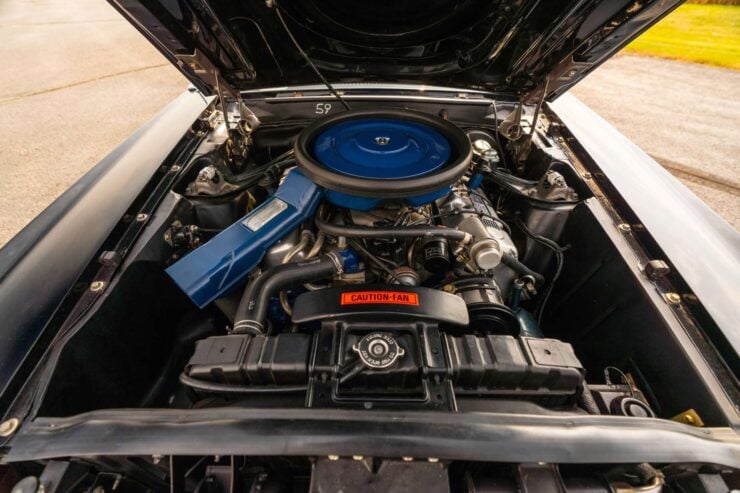

Street tune paired a 735 cfm Holley on an aluminum intake with a mild cam and 10.5:1 compression. Ford officially rated it at 375 bhp at 5,200 rpm and 450 lb ft at 3,400 rpm, numbers widely understood to be very conservative, but still enough to overwhelm the skinny period bias-plys. Car Life’s 1969 road test recorded 0 to 60 mph dash in 7.1 seconds and a quarter-mile in 14.09 seconds at 103 mph.
The Boss 429’s model story spans just two years, 1969 and 1970. The 1969 cars used hydraulic lifters and color-keyed hood scoops; five body colors were offered. For 1970, Ford adopted a mechanical-lifter (solid-lifter) cam nearly across the board, the scoop turned matte black, a Hurst shifter became standard, and Ford added the bold Grabber palette.
Inside, most cars wore black Comfortweave buckets, no air conditioning was offered, and the fold-down rear seat conflicted with the trunk battery. Depending on the source, production numbers vary slightly. Most respected counts land at approximately 1,359 cars across both years, typically broken out as 859 for 1969 and 499 for 1970. Either way, supply was thin, and the option ended quietly mid-1970 once Ford had the homologation it needed for NASCAR.
On track, the engine did the talking. Though the Mustang wasn’t Ford’s NASCAR body of choice this time around, the homologated Boss 429 engine found its natural home in Ford and Mercury intermediates like the Torino Talladega and Cyclone Spoiler II.
Back on the street, contemporary testers grumbled about low-rpm response, huge ports, smog-era calibration, and a mild can tend to do that. But the architecture was over-built. Swap in headers and sharper timing and the engine woke up – in race trim it spun around deep into the noisy side of the tachometer and turned out serious speed.
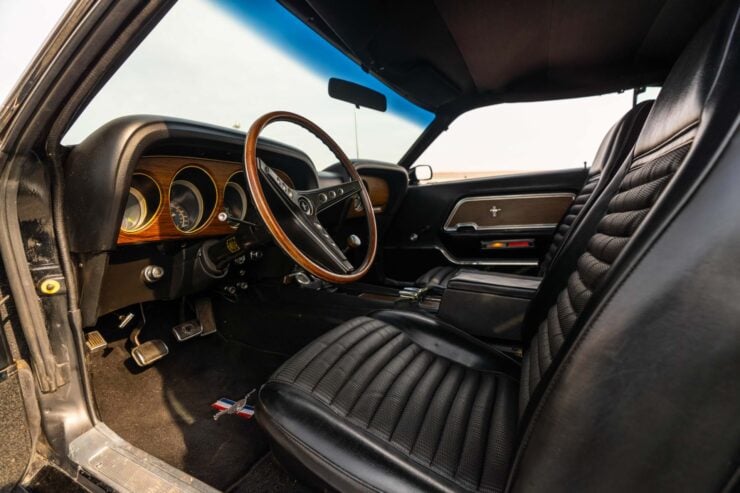

Collector interest never really cooled on the 429s – the engineering mystique, Kar Kraft pedigree, low production numbers, and those iconic heads keep values strong today. It also inspired a modern after-life.
Classic Recreations launched officially-licensed Boss 429 “continuation” cars in 2018 built from original-era bodies and powered by modern big-inch crate builds with Kaase “Boss 9” cylinder heads, EFI, and contemporary driveline hardware – an interpretation that shows what the car can be when it isn’t constrained by 1969 emissions and warranty concerns.
That said, the heart of the story remains the original Brighton-built homologation specials, the cars that existed so Ford could win on Sunday with a 429 that breathed like a race engine and behaved, more or less, like a street car Monday through Friday.
The 1969 Ford Mustang Boss 429 Shown Here
The car you see here is an original 1969 Boss 429, a fact that’ll make it of much interest both to collectors and enthusiasts. When it was built, this car was finished in Raven Black over a Black interior, and as you would expect for one of these, it comes with the lip spoiler, rear spoiler, and that cavernous black hood scoop.
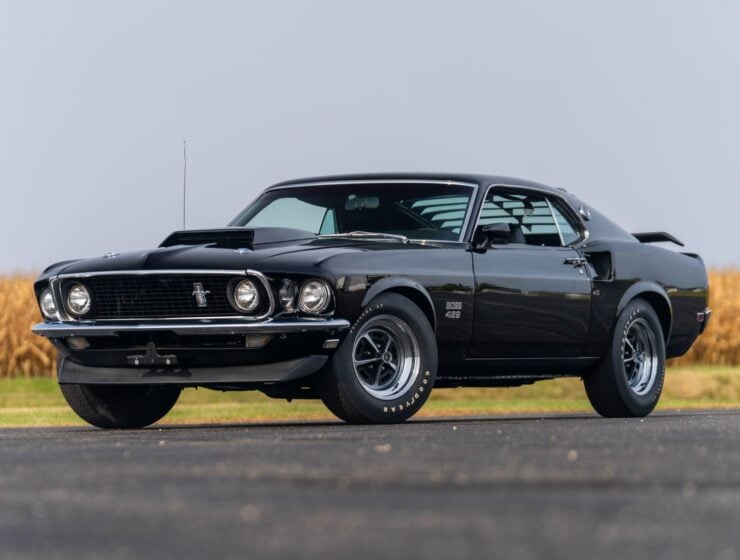

It has power steering and power brakes with front discs and rear drums, it rides on Magnum 500 wheels with period-correct Goodyear Polyglas tires fitted, and it has a trunk-mounted battery.
The car is now due to roll across the auction block with Mecum in mid-January and you can visit the listing here if you’d like to read more about it or place a bid.
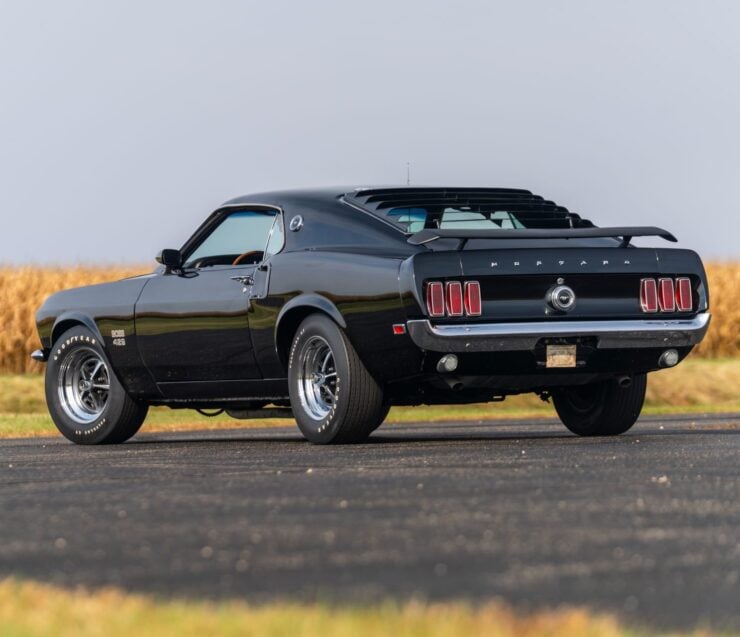
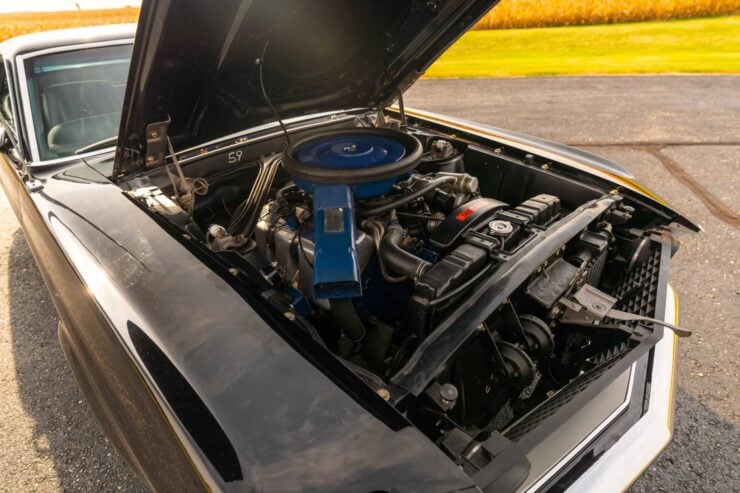

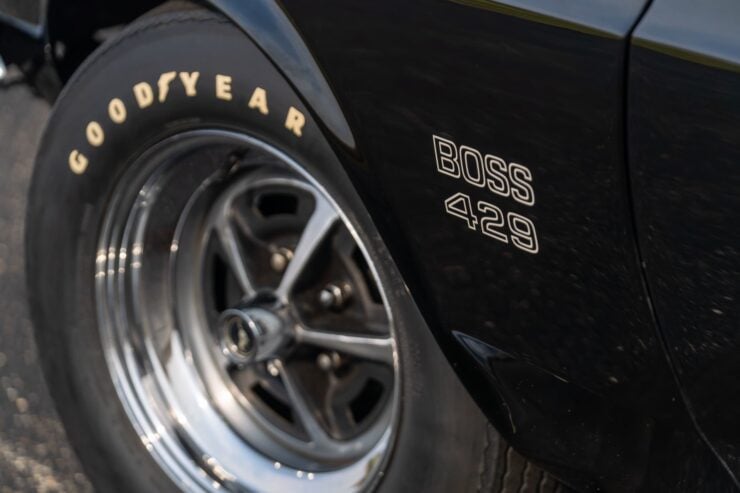
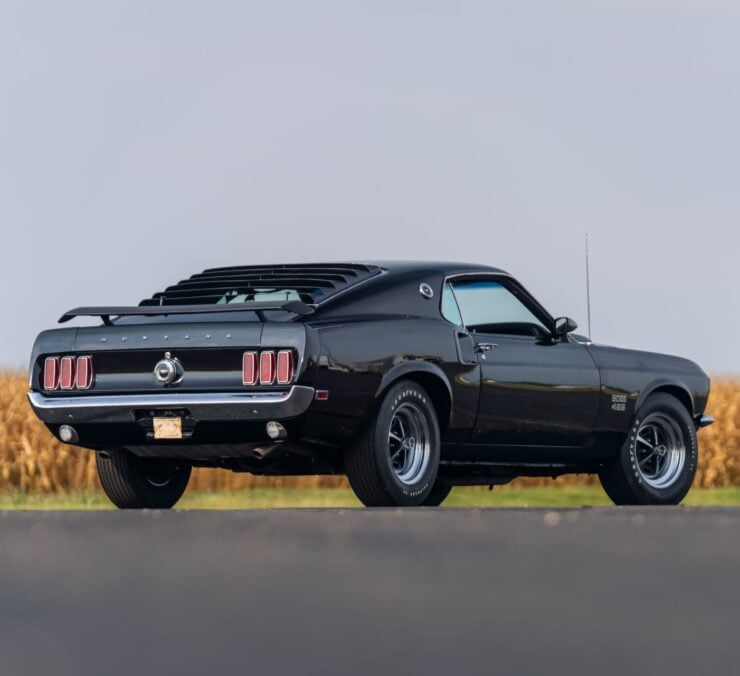
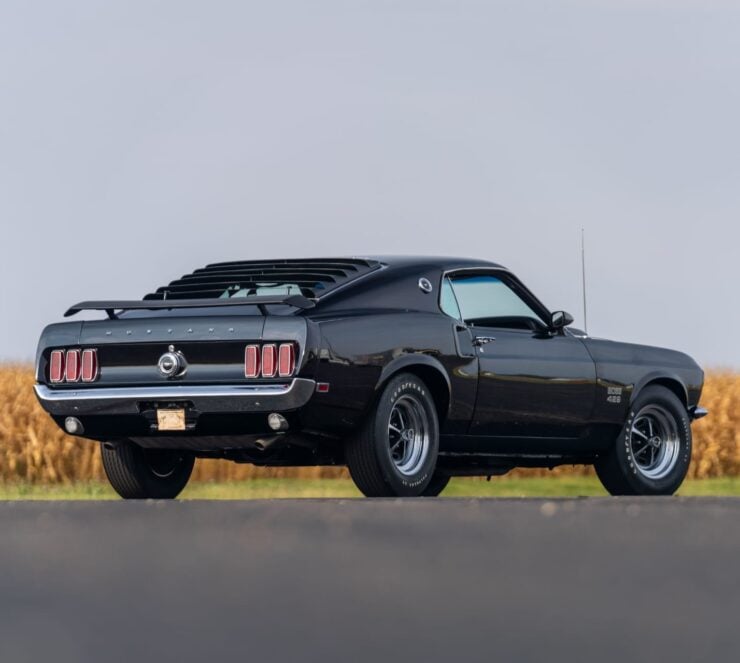
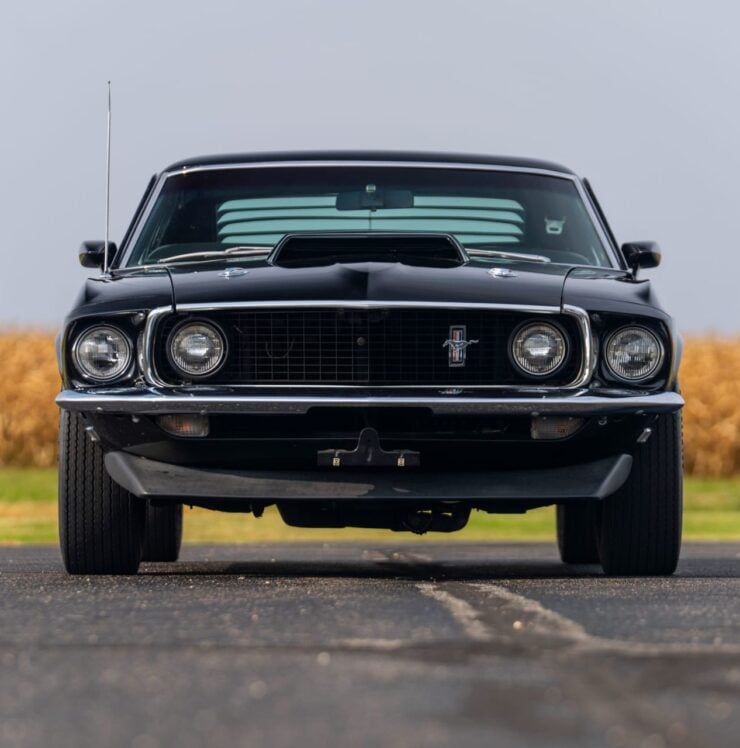
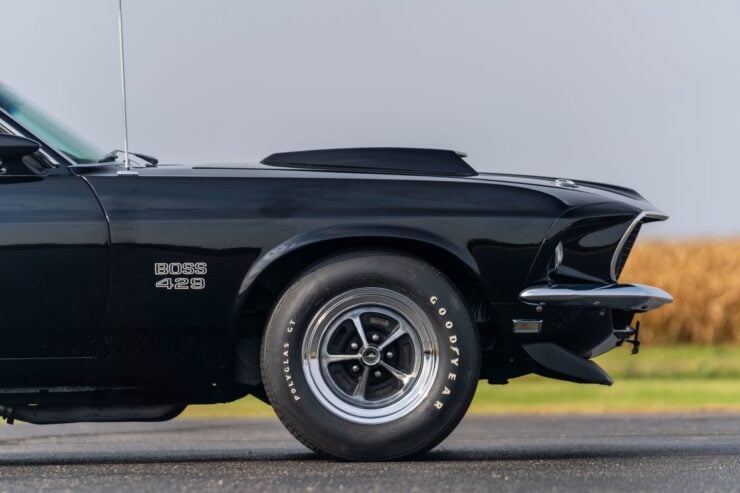
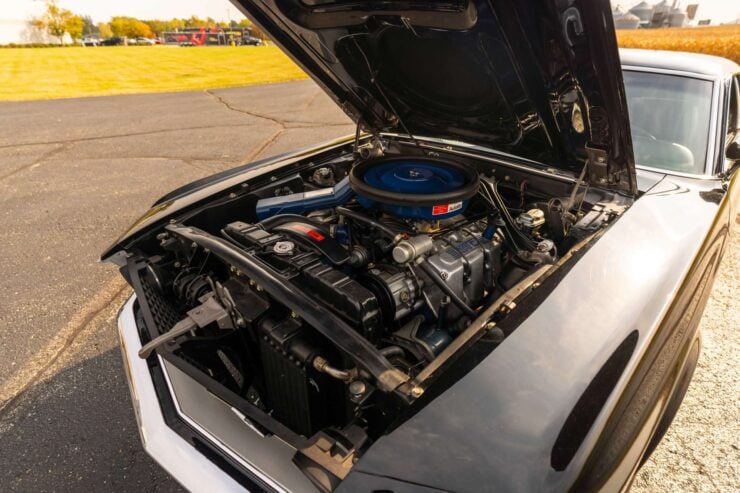
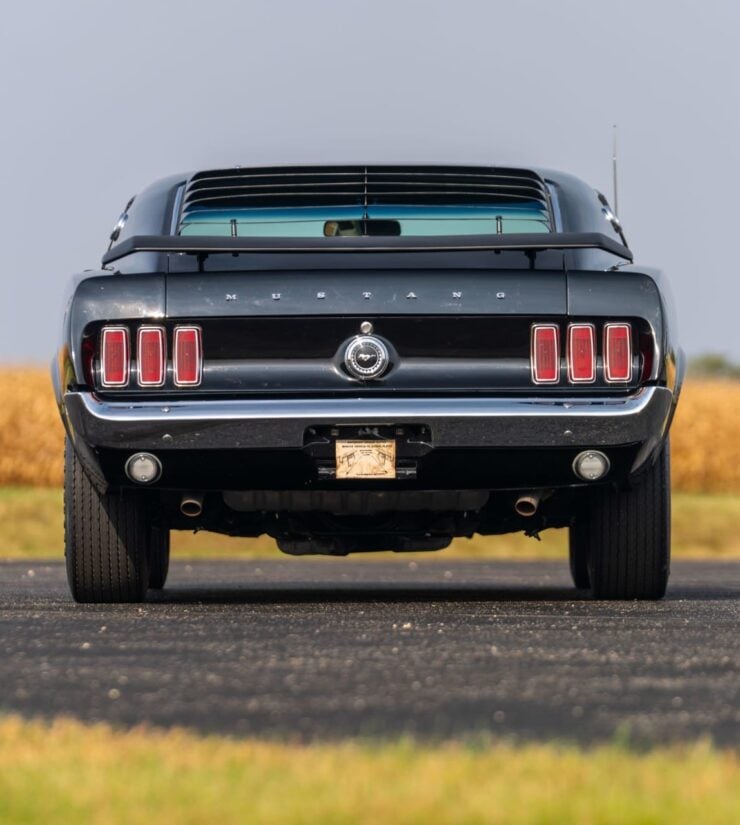
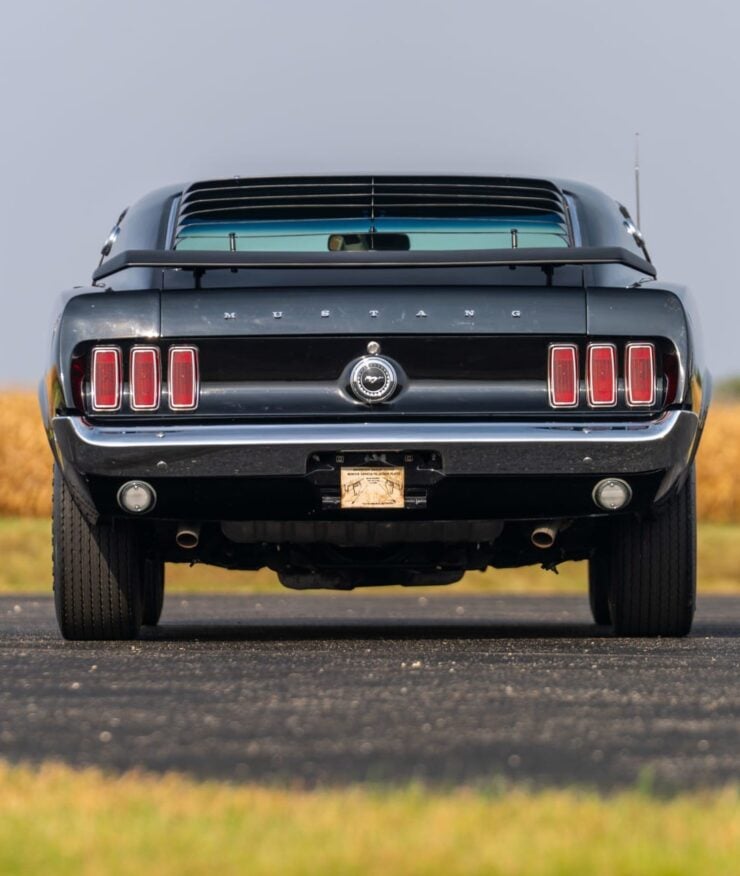
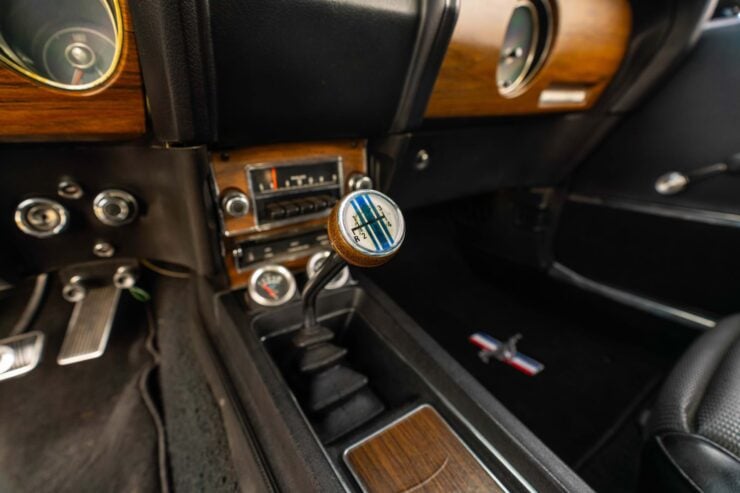
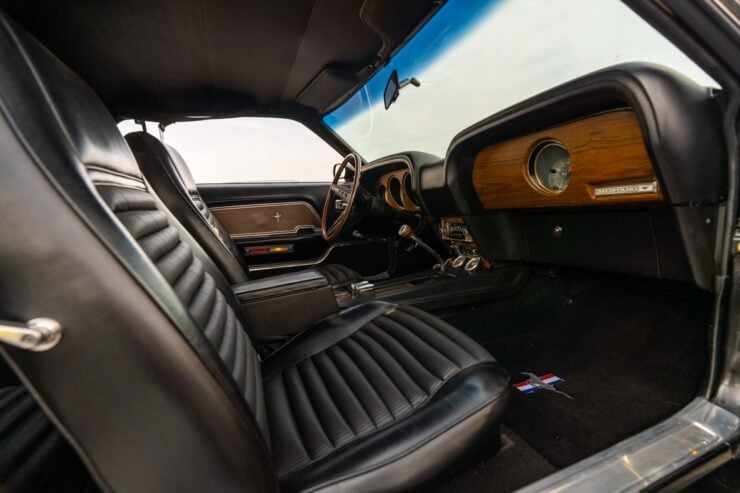

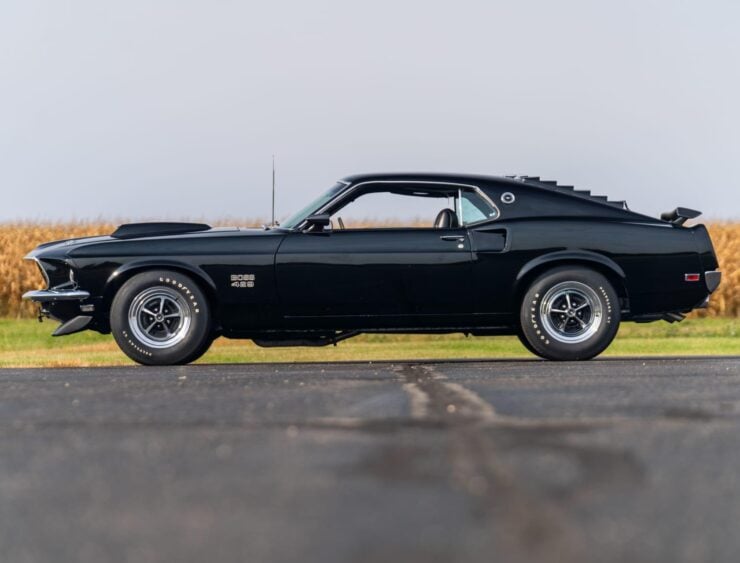
Images courtesy of Mecum



